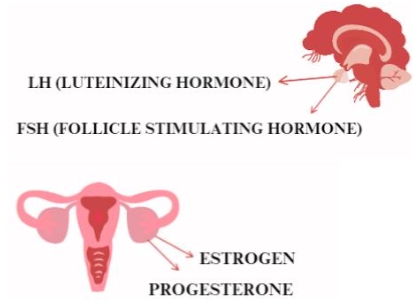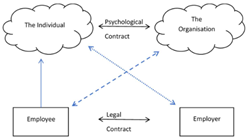Burnout, mental resilience and quality of life in Greek professionals of public and private sector: Which is the impact of demographic, occupational and psychological variables?
Abstract
The research investigated the relationship between burnout syndrome and the variables of mental resilience, quality, and enjoyment of life in Greek private and public sector workers (N = 112), with demographic differences. Data were collected through a structured questionnaire that was distributed in the form of an electronic Microsoft form. The questionnaire contained demographic questions, the psychometric tool Burnout Assessment Tool version 2.0, the psychometric tool Brief Resilience Scale (BRS), and the psychometric tool Quality of Life Enjoyment and Satisfaction Questionnaire (Q-LES-Q), which were used to measure the three variables examined by the research. For statistical analysis, linear regression analysis was used to find independent factors. The main research hypothesis was verified, finding a negative correlation between burnout and the variables of mental resilience and quality of life, while it was identified that employees experienced greater exhaustion and spiritual withdrawal compared to freelancers. Hypotheses regarding age, educational level, and public-private job data were not verified as there were no statistically significant differences in demographic results.
References
[1]Maslach C, Leiter MP. Burnout. In: Stress: Concepts, Cognition, Emotion, and Behavior. Academic Press; 2016. pp. 351–357. doi: 10.1016/b978-0-12-800951-2.00044-3
[2]Burke RJ, Shearer J, Deszca G. Burnout among men and women in police work: An examination of the Cherniss model. Journal of Health and Human Resources Administration. 1984; 7(2): 162-188.
[3]Maslach C, Schaufeli WB, Leiter MP. Job Burnout. Annual Review of Psychology. 2001; 52(1): 397-422. doi: 10.1146/annurev.psych.52.1.397
[4]Maslach C, Leiter MP. The Truth about Burnout: How Organizations Cause Personal Stress and What to Do About It. Jossey Bass; 1997.
[5]Templeton K, Bernstein CA, Sukhera J, et al. Gender-based differences in burnout: Issues faced by women physicians. Available online: https://nam.edu/gender-based-differences-in-burnout-issues-faced-by-women-physicians/ (accessed on 15 December 2023).
[6]Leiter MP, Maslach C, Frame K. Burnout. In: Cautin RL, Lilienfeld SO (editors). The Encyclopedia of Clinical Psychology. Wiley Online Library; 2015. pp. 1-7. doi: 10.1002/9781118625392.wbecp142
[7]Herrman H, Stewart DE, Diaz-Granados N, et al. What is Resilience? The Canadian Journal of Psychiatry. 2011; 56(5): 258-265. doi: 10.1177/070674371105600504
[8]Friborg O, Barlaug D, Martinussen M, et al. Resilience in relation to personality and intelligence. International Journal of Methods in Psychiatric Research. 2005; 14(1): 29-42. doi: 10.1002/mpr.15
[9]Cicchetti D, Curtis WJ. The Developing Brain and Neural Plasticity: Implications for Normality, Psychopathology,and Resilience. Developmental Psychopathology. Published online September 5, 2015: 1-64. doi: 10.1002/9780470939390.ch1
[10]Salmela-Aro K, Upadyaya K. Role of demands-resources in work engagement and burnout in different career stages. Journal of Vocational Behavior. 2018; 108: 190-200. doi: 10.1016/j.jvb.2018.08.002
[11]Ojo AO, Fawehinmi O, Yusliza MY. Examining the Predictors of Resilience and Work Engagement during the COVID-19 Pandemic. Sustainability. 2021; 13(5): 2902. doi: 10.3390/su13052902
[12]Schaufeli W, De Witte H. Burnout Assessment Tool (BAT). In: Krägeloh CU, Alyami M, Medvedev ON (editors). International Handbook of Behavioral Health Assessment. Springer, Cham. doi: 10.1007/978-3-030-89738-3_54-1
[13]Smith BW, Dalen J, Wiggins K, et al. The brief resilience scale: Assessing the ability to bounce back. International Journal of Behavioral Medicine. 2008; 15(3): 194-200. doi: 10.1080/10705500802222972
[14]Endicott J, Nee J, Harrison W, et al. Quality of Life Enjoyment and Satisfaction Questionnaire. PsycTESTS Dataset. Published online 1993. doi: 10.1037/t49981-000
[15]Anand M, Arora D. Burnout, life satisfaction and quality of life among executives of multinational companies. Journal of the Indian Academy of Applied Psychology. 2009; 35(1): 159-164.
[16]Jamal M. Burnout and self‐employment: a cross‐cultural empirical study. Stress and Health. 2007; 23(4): 249-256. doi: 10.1002/smi.1144
Copyright (c) 2023 Nikolaos Plemmenos, Dimitris D. Vlastos, Paraskevi Theofilou

This work is licensed under a Creative Commons Attribution 4.0 International License.









